Neurotoxins—like Botox and Dysport—are a nonsurgical form of wrinkle treatment that have minimal discomfort and quick recovery rates.
Most of us know that these injections can improve forehead lines, crows feet, and the vertical lines between the eyebrows. But did you know that these injections can also benefit the lower face, including the chin and overall face shape?
This graphic shows both cosmetic and therapeutic uses for neurotoxins:
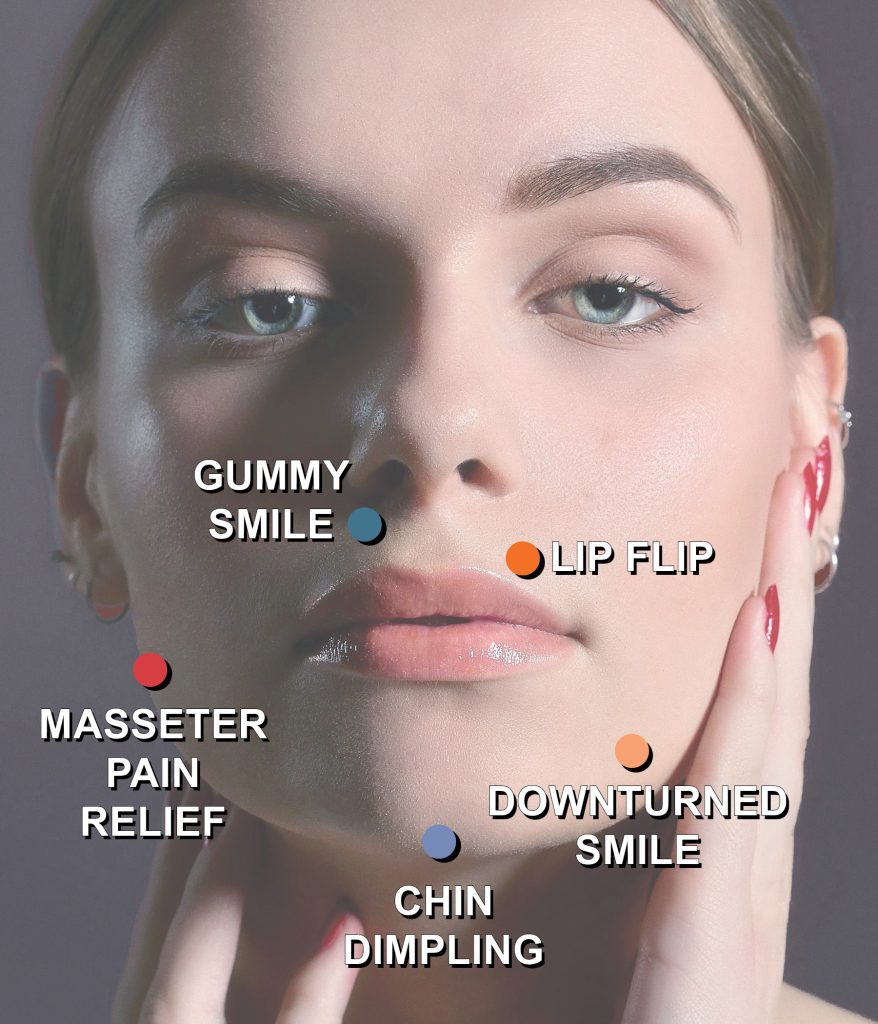
● GUMMY SMILE: Some people’s upper lip elevates too far above their upper teeth when they smile, exposing a large portion of their gums. Botox can lower the upper lip to reduce the visibility of the gums.
● LIP FLIP: A lip flip is a popular procedure that makes your lips look fuller without increasing the volume of your lips.
● CHIN DIMPLING: Sometimes the chin can appear dimpled or bumpy. Neurotoxins can relax the muscles in the chin area to smooth out its appearance.
● DOWTURNED SMILE: Injecting neurotoxins can weaken the muscles that pull down the mouth causing a downwards looking smile, or scowl.
● MASSETER PAIN RELIEF: Neurotoxins can be used to provide relief from the painful and uncomfortable symptoms of Bruxism. This condition causes involuntary teeth clenching, jaw pain, headaches, and tooth damage. Neurotoxin injections can reduce or eliminate these symptoms by relaxing the overactive masseter muscles. Additionally, when the masseter muscle is injected it can slim the overall look of the lower face.
Our team of expert injectors has extensive experience with facial injectables.
Non-Surgical Option: Are You a Fan of Fillers?
Do you wish your lips could be plumper or more balanced? Thanks to dermal fillers, this wish is easily granted. We offer products specifically formulated to enhance and augment the lips to your desired size and shape, or to correct asymmetry.

Juvederm: For Silkier, Smoother, Natural-Looking Lips
Juvederm products utilize hyaluronic acid to create instant volume in the exact way that your lips need it most. Juvederm Vollure is specially formulated with a balance of gel firmness and low cohesivity, which subtly adds volume. This means that it is firm enough to hold its shape, but malleable enough to move, making the results noticeable yet natural. It lasts up to 18 months.
Juvederm Ultra adds fullness to the lips, while Juvederm Volbella adds subtle volume and even softens the appearance of vertical lip lines. Both of these products last between six and 12 months.
You only need around 30 minutes for your dermal filler lip treatment.
A Surgical Option for Fuller, Lifted Lips
A lip lift is a surgical procedure that shortens the space between the nose and the top of the lip. This increases the amount of pink lip tissue that’s visible, which makes the lips look fuller and more pronounced. It can also increase how much your upper center teeth show when your lips are resting. It leaves a small scar at the base of the nostrils, but it is usually undetectable after a few weeks.
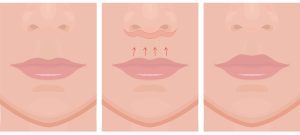
It’s a good option for people who want to add height instead of volume to their lips. Younger people who haven’t achieved the look they want from fillers, or if they find that fillers make their lips look unnaturally plump or duck-like, may prefer a lip lift.
And a lip lift is a good option for reducing the space between the lips and the nose. With age, this space can increase and can make the upper lip look thinner.

Gary McKnight is the head basketball coach at Mater Dei High School in Santa Ana. At his time there he has become the winningest high school basketball coach in California history. See a video about his story HERE.
Coach McKnight has led Mater Dei to more than 1250 victories, including a National Championship and 11 California State Titles. He has coached nine players who have gone on to play in the NBA.

More recently, he has faced a different battle. “At a regular checkup, my doctor saw a spot on my face and said, we’ve got to get you to the best, and referred me to the SCARS Center. I went in there and they said it required Mohs surgery. Two Mohs surgeries and big reconstructions on my face.”
McKnight had squamous cell carcinoma (SCC) on his cheek, neck and ear.
Dr. Adam Aronson and Dr. Matthew Goodman performed the Mohs surgery, followed by Dr. Simon Madorsky reconstructing the defects. “They all took good care of me. There is no guesswork. They get you in right on time, they explain what they need to do. I went in the morning and I walked out in the afternoon, cancer free and reconstructed.”
“I had four skin cancers—the first two didn’t require plastic surgery, the last two did. It was major surgery. Dr. Madorsky was really caring and I’ve still got my good looks.”
At first, his students were worried about him, but his current students don’t even know it happened because he healed so well.
Coach McKnight is now an advocate for skin health and getting regular skin checks. “I really encourage people to go and get checked and stay on top of it. Especially here in Southern California where the sun is beating down. Probably being a basketball coach instead of a baseball coach saved my life, because I wasn’t out in the sun all the time.
He is in charge of 86 young men and consistently reminds them about protecting their skin.
“I talk to the kids all the time about wearing sunscreen when they go to the beach and surf. I say ‘put it on your ears, your nose, your forehead. Wear a baseball cap. You all know what happened to me.”
Whether you’re looking to reduce wrinkles, minimize scars, or improve overall skin texture, CO2 laser treatment could be the answer.
What Does Fractional CO2 Laser Do?
Fractional CO2 laser is a cosmetic procedure that improves skin texture, tone, and overall appearance. The laser ablates the top layer of skin removing sun damage as well as creates microscopic channels in the skin, known as microthermal zones. These processes stimulate the body’s natural healing response, which promotes collagen production and triggers the replacement of damaged skin with new, healthier tissue.
Key Benefits of Fractional CO2 Laser Treatment
- Wrinkle Reduction: especially of lower face
- Scar Improvement: acne scars and surgical scars
- Pigmentation Correction: uneven pigmentation, sunspots, and age spots
- Treats superficial sun damage
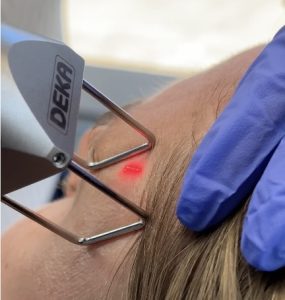
Who Is a Good Candidate?
Fractional CO2 laser is a versatile treatment suitable for patients of various ages and skin concerns. Ideal candidates include those looking to improve fine lines/wrinkles, scarring, and/or dark spots. It is safest for patients with lighter skin tones (Fitzpatrick I-III).
The Procedure
A fractional CO2 laser procedure can be performed in the clinic or operating room. Here’s what you can expect during the treatment:
- Consultation: Before the procedure, you will have a consultation with a qualified practitioner to discuss your concerns, assess your skin, and determine if fractional CO2 laser is the right option for you.
- Day of Treatment: Topical Anesthesia: a topical anesthetic is applied to the treatment area to minimize discomfort
- Pre-Medication: Your clinician may prescribe some medications to make the process more relaxing and comfortable.
- Nerve Blocks: You may receive lidocaine injections to further numb the sensitive areas of treatment
The laser treatment is customized based on skin, treatment areas, and goals. The laser can also be performed in the OR setting and combined with additional facial rejuvenation procedures such as eyelid surgery or facelift surgery.
Recovery Process
- Immediate Recovery: The treated area will likely be red and swollen after the procedure. It may feel similar to a bad sunburn.
- Peeling and Flaking: Over the next few days, the skin will begin to peel and flake as the damaged outer layers are replaced with fresh, new skin. It’s important to avoid picking at the skin to prevent scarring.
- Sun Protection: Protecting your skin from sun exposure is crucial during the recovery period. Sun exposure may lead to increased hyperpigmentation.
- Total recovery time depends on intensity of treatment
Please contact the Appearance Center to consult with a qualified practitioner.
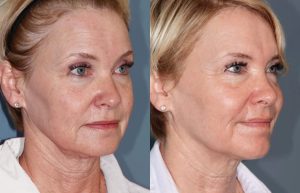
Not only are we wrapping up the summer, but September is Skin Care Awareness Month. We of course remind you to remain vigilant about sunscreen, but we also want to help you to start taking even better care of your skin with some of our in-office procedures.
Here are our three favorite ways to improve skin texture and appearance, from least to most invasive:
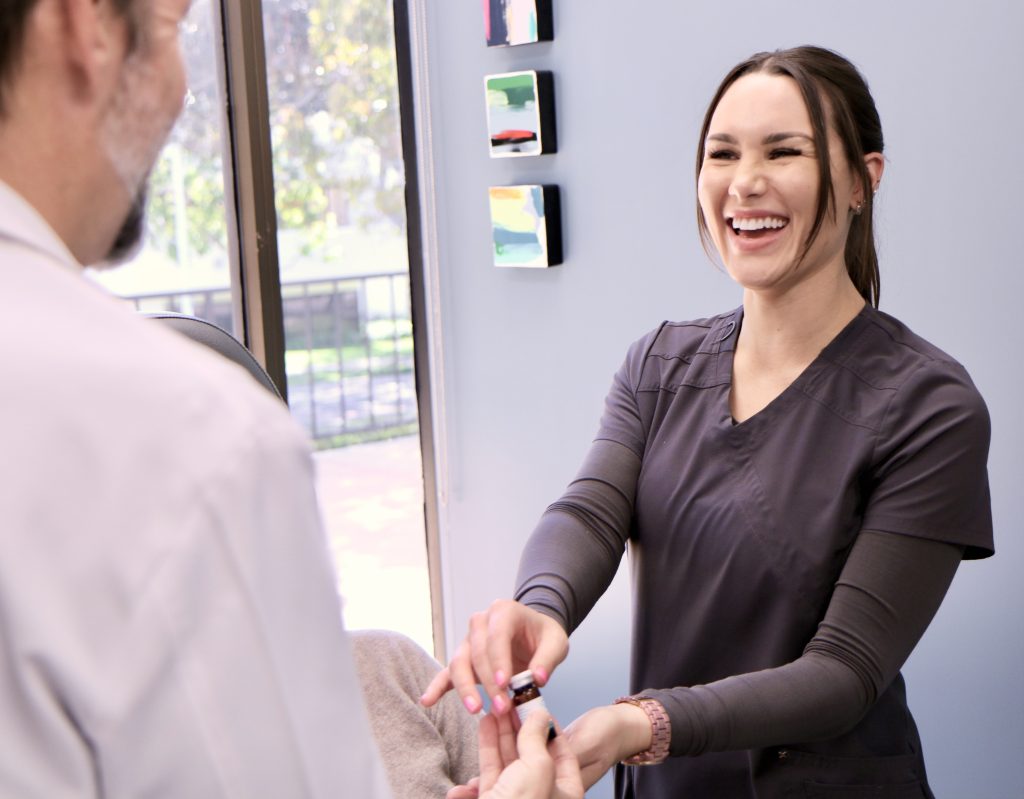
PEEL
Indications: Pigmentation, active acne, sun-damaged skin, fine lines and wrinkles.
How it works: Chemicals penetrate layers of the skin and promote rapid cell turnover and collagen synthesis. It also clears dead skin cells and oils. This helps create brighter, more even, and smoother skin. Select ingredients also work to reduce dark spots or treat active acne lesions. Best results are achieved with a series of peels.
Recovery: You will likely have significant peeling, especially 3-4 days after the peel. Most peeling resolves by about a week.
Cost: Varies by area, $
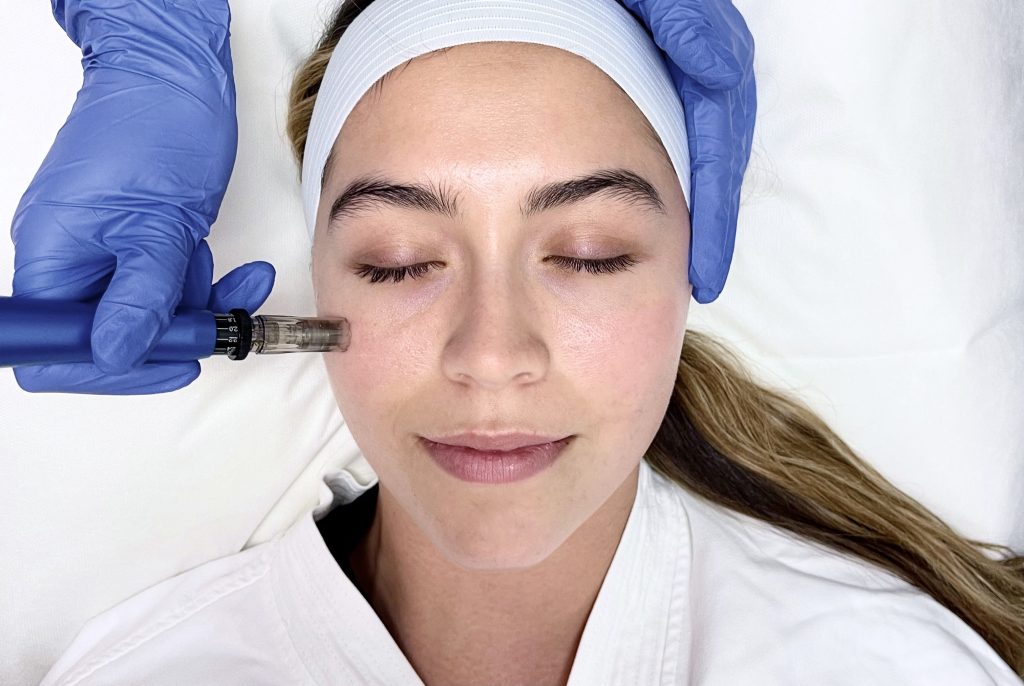
MICRONEEDLING
Indications: Acne scarring, surgical scars, loss of collagen from aging.
How it works: Small needles puncture the superficial layers of the skin, inducing collagen and elastin production. This results in brighter, tighter, and younger looking skin. A growth factor serum is simultaneously infused into the skin punctures, enhancing collagen production.
Recovery: For the first week you will experience redness. Avoid sun exposure for one week after treatment.
Cost: Varies by area, $
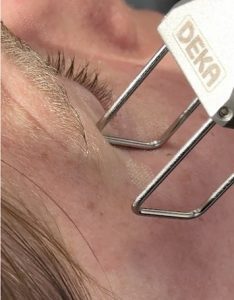
FRACTIONAL CO2 LASER
Indications: Sun-damaged skin, fine lines and wrinkles, acne scars, lighter skin tones.
How it works: Fractional CO2 laser creates micro punctures in the skin while also delivering thermal energy. This removes damaged tissue and stimulates tissue shrinkage while inducing collagen production. Collagen remodeling continues for 3-6 months. Best for lighter skin types not prone to dark spots.
Recovery: This will depend on how aggressive your treatment is. You could have redness for up to a month during healing. Depending on your healing, you may be able to wear makeup after 1 week.
Cost: Varies by area, $$ – $$$
Please schedule a consultation so we can assess the best procedures for you!
The fractional CO2 laser creates tiny “columns of thermal destruction” in the skin that stimulate the growth of new, healthy skin cells to replace old, damaged cells. This procedure treats wrinkles, discoloration, sun damage, age spots, and acne scars. Instead of removing skin layers with chemicals, the CO2 laser removes skin layers by vaporization.
During your treatment, one of our physicians will apply the Fractional CO2 laser to the area chosen for resurfacing. The laser will eliminate surface damage, while concurrently heating the underlying tissue, causing it to increase collagen production. Depending on the scope of the treatment area, your laser session may take anywhere from 30 minutes to two hours.
WHAT DOES THE CO2 LASER TREAT?
The Fractional CO2 laser is used to address a wide range of skin conditions, including:
- Fine lines (including around the eyes)
- Deeper wrinkles around the forehead, mouth, or nose
- Sun damaged skin
- Acne scars
- Hyperpigmentation
In addition, the Fractional CO2 laser can be used to treat other visible areas of the body, such as the neck, chest, or hands.
BEFORE & AFTER IMAGES
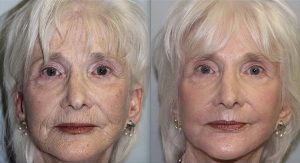
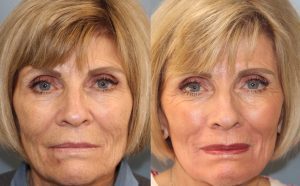
The jawline can be a crucial part of facial aesthetics. A strong jawline in men is often associated with attractiveness and confidence. For women, a jawline can represent youth and beauty.
Allergan (the maker of BOTOX and JUVEDERM) has just released a filler created specifically for the jawline. This long-lasting filler is now available at aesthetic practices for patients over the age of 21 with moderate to severe loss of jawline definition.
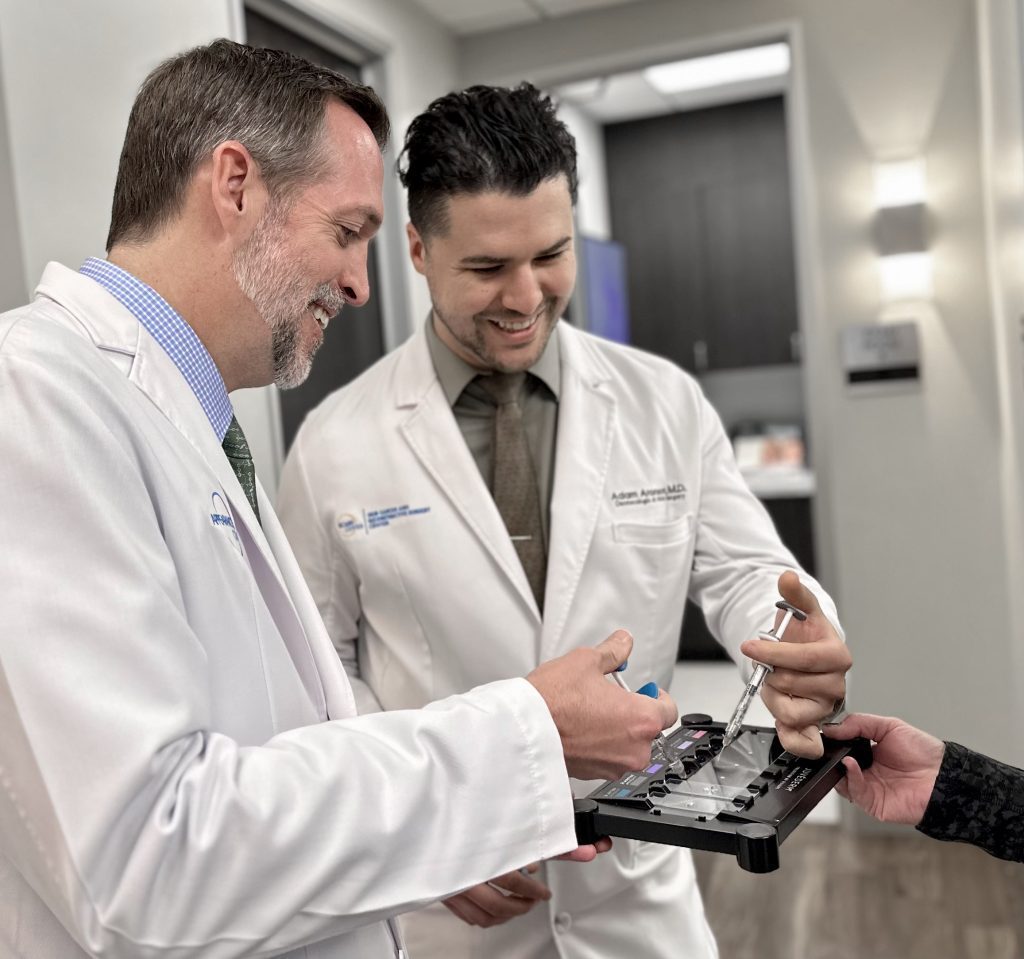
VOLUX is a slightly more cohesive and thicker formula than JUVEDERM VOLUMA. Both of these fillers build volume and create a lift beneath the skin, but while VOLUMA is FDA-approved for the chin and cheeks, VOLUX is FDA-approved to treat the chin and jawline.
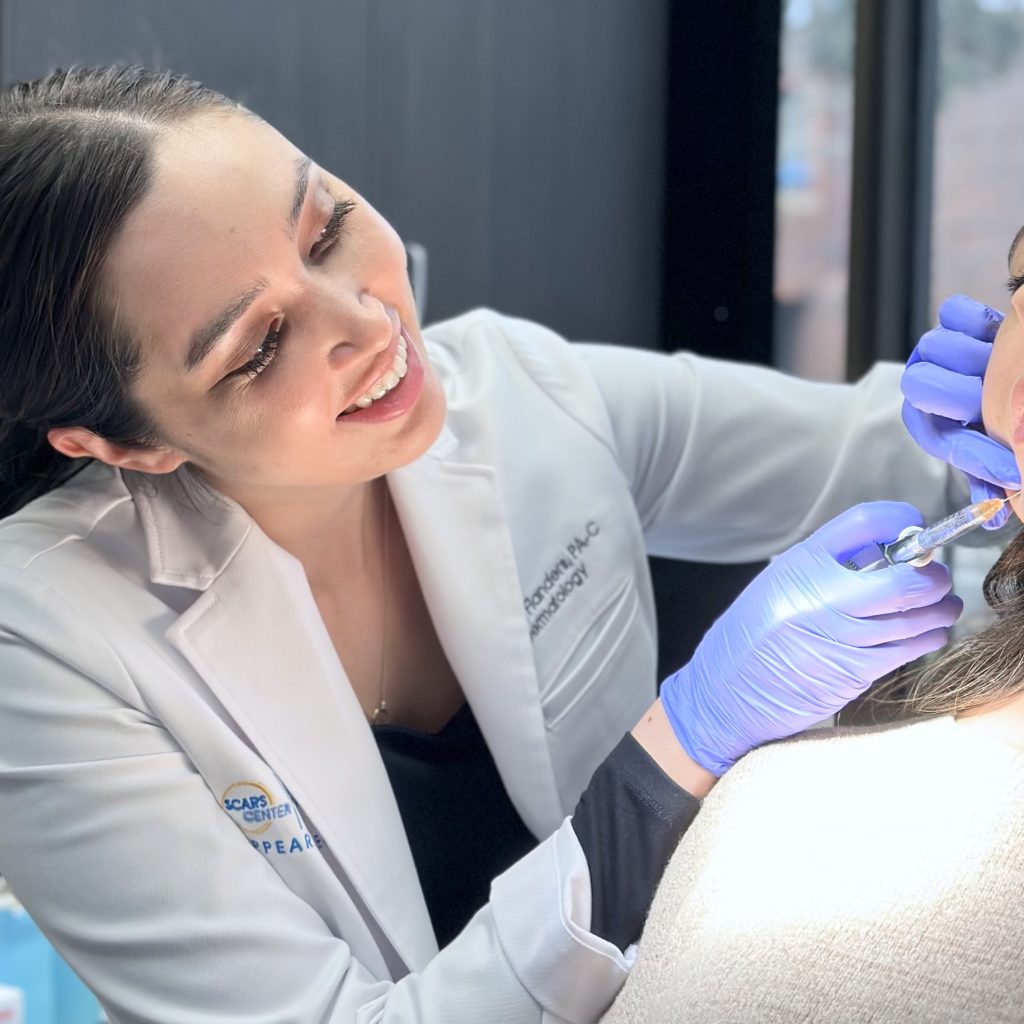
The procedure only takes a few minutes, and any swelling is dramatically improved within 48 hours. Results last between 12 and 18 months.
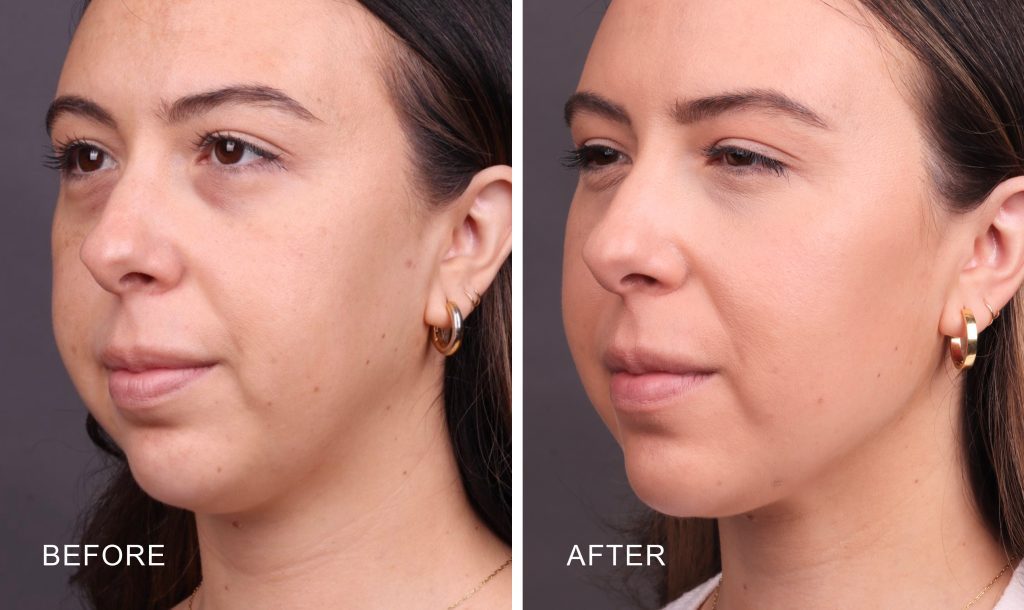
All of our providers are expert injectors and can help you to assess your jawline and other aspects of facial aesthetics. Call us to schedule a consultation.
Dermal fillers, also called injectables, are a safe and effective way to enhance your appearance without the need for invasive surgery or downtime, but results are very dependent on the injector. At the Appearance Center, our providers are highly-trained medical professionals, familiar with the unique anatomy of the face, and have had extensive training and years of experience.
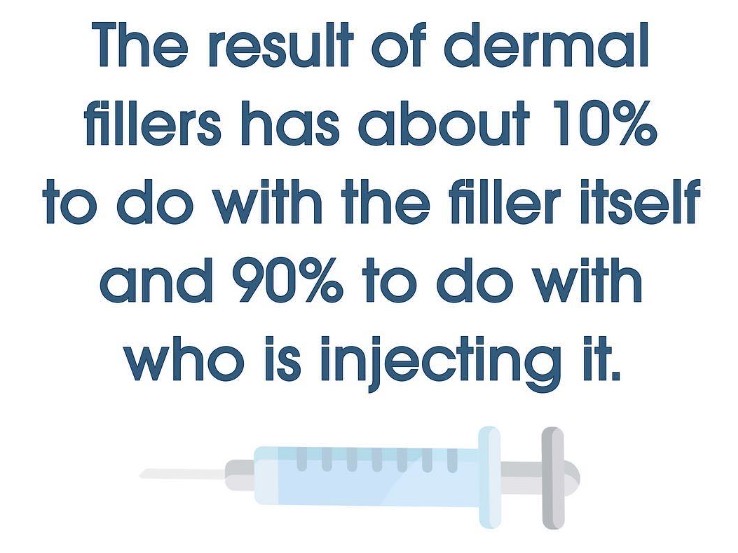
Dermal fillers can be used to address a variety of different cosmetic concerns – restoring lost volume to depleted areas, creating more attractive facial contours, and improving symmetry.
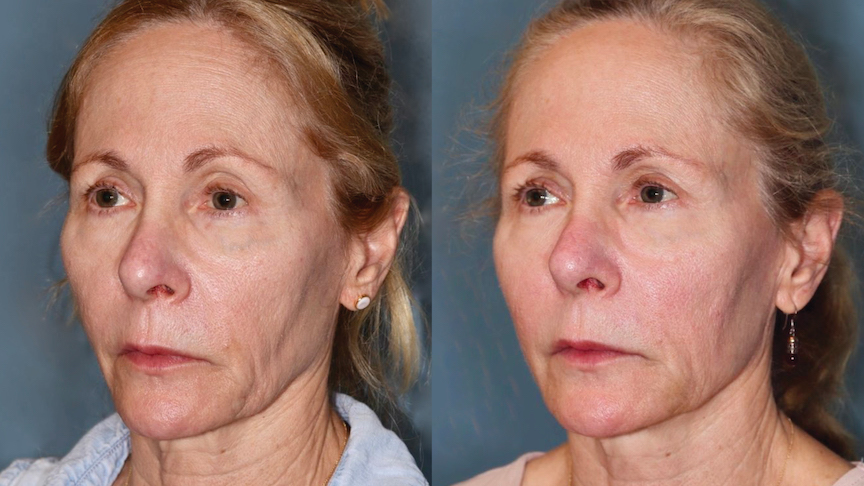
FIGHT THE SIGNS OF AGING
As the skin is subjected to elements over time, the appearance of a face changes. Dermal fillers reverse this by giving a person back the facial volume they may have lost. These fillers can also make the cheeks look more contoured, give a more defined jawline, and overall make a patient look refreshed.
One of the great things about dermal fillers is that virtually no recovery time is required. After their treatment session, patients can usually return to most activities right away.
More good news: The results of dermal fillers are not permanent. If you don’t love your results from dermal filler injections, take heart knowing the effects are temporary.
Filler technology enables results to last six to 18 months although there is variation between individuals, as well as according to the type, quantity and depth of the dermal filler placed within your skin.
In many cases, a skilled cosmetic eye can make more immediate corrections or improve upon your previous results. Our providers are also experienced with correcting over-filling or wrong-site filling done at other locations.
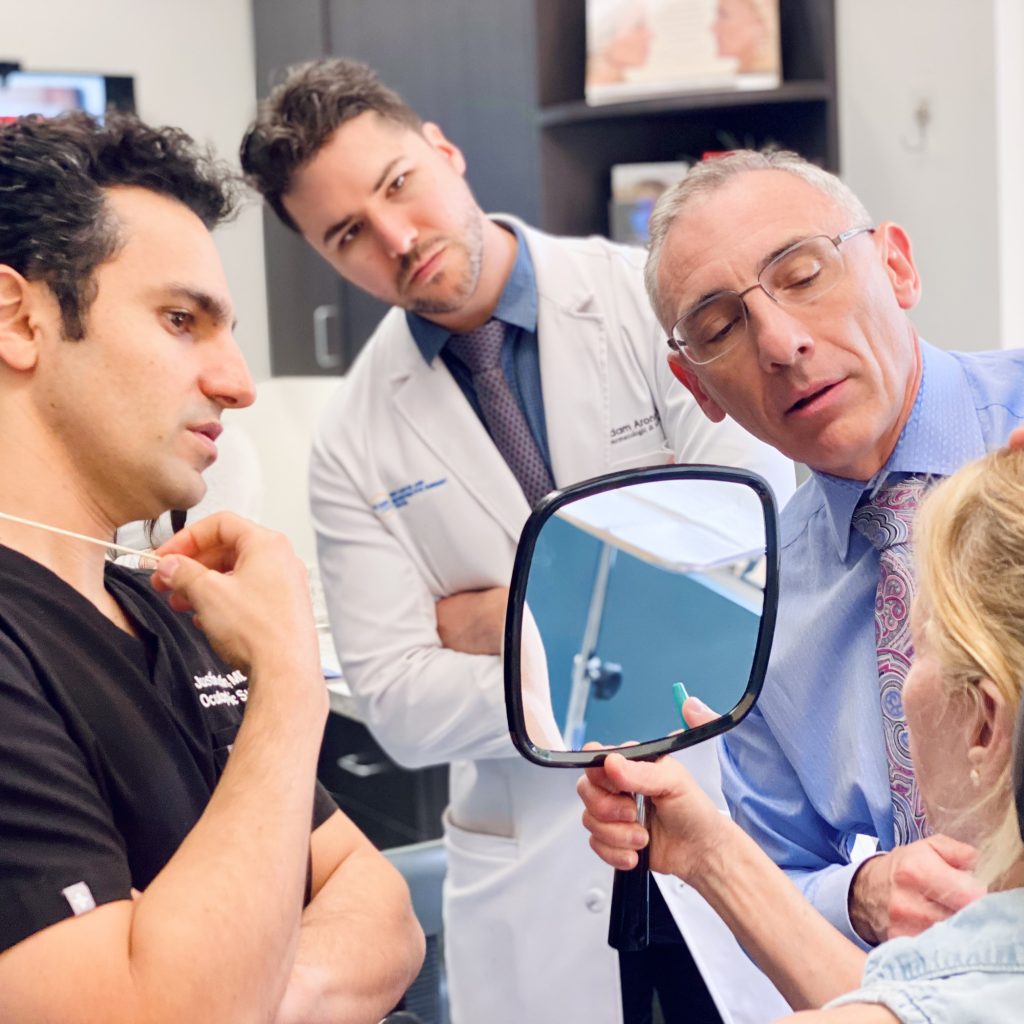
A Rhinoplasty, or nose job, is surgery performed to alter the way your nose functions and looks. According to the American Society of Plastic Surgeons, nearly 220,000 rhinoplasties are performed yearly, making this the most common facial plastic surgery procedure. Rhinoplasty can simultaneously help you improve breathing and achieve a more balanced appearance
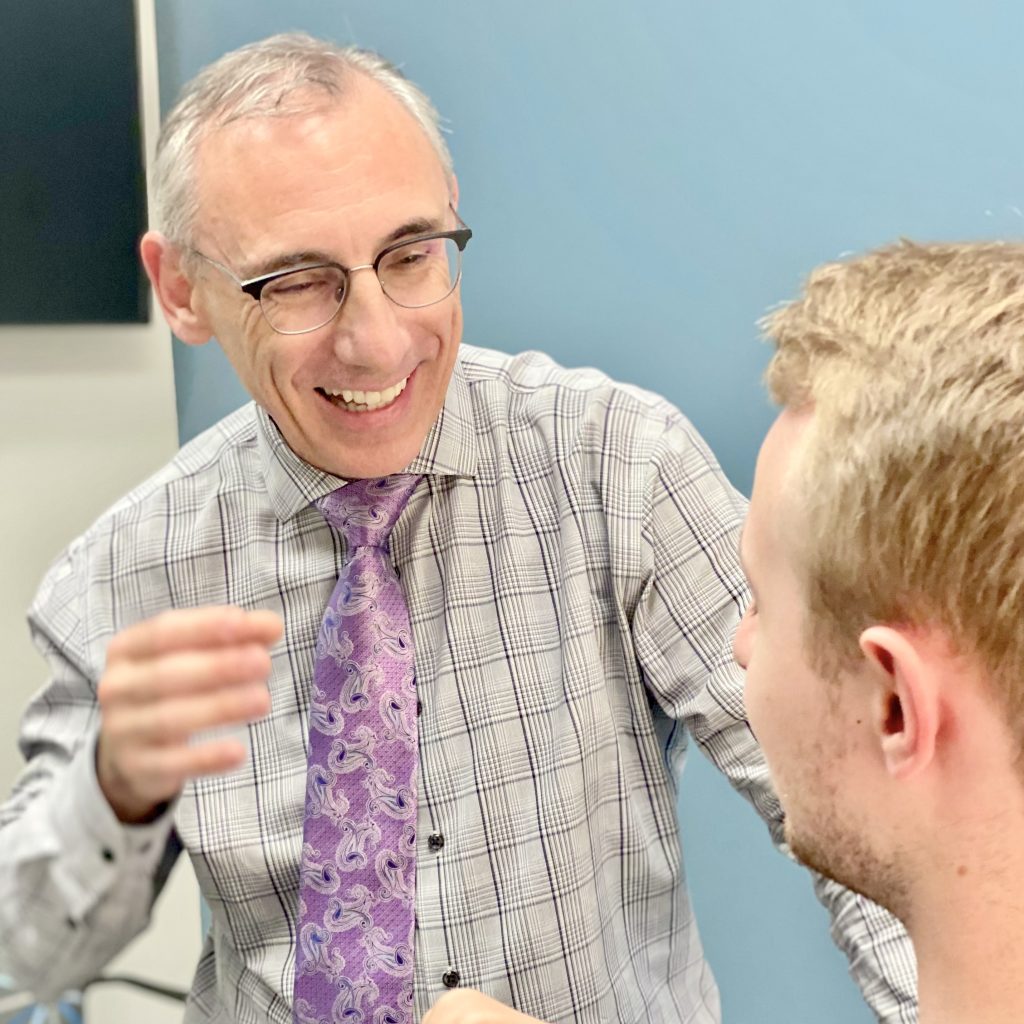
IS RHINOPLASTY RIGHT FOR ME?
A common medical reason for rhinoplasty is difficulty breathing through the nose. Nasal obstruction can cause problems with exercise, disturb sleep, contribute to snoring and sleep apnea, or interfere with other activities. If medical treatments (such as nasal spray or sleep apnea treatment) fail, surgery may be the next step. Rhinoplasty done for medical reasons such as these is often covered by health insurance.
WHAT ABOUT COSMETIC RHINOPLASTY?
Patients often ask, “While you’re in there, could you make other changes to my nose?” The answer is yes. The most common requests are reducing a nasal hump, refining the tip, or correcting asymmetries. These cosmetic changes, which are not covered by insurance, are frequently combined with functional rhinoplasty so there is only one recovery.
“I just want to look “x” years younger” is a common request in the dermatology or plastic surgery office. One way to accomplish that is to restore facial volume. Most of us may not initially recognize volume loss in our face because we see ourselves everyday. But the changes become stark when we look at old photographs. Restoring volume is an important and common approach to helping patients achieve the results they desire.
Hyaluronic acid injections, commonly known as “fillers,” are a popular way to increase facial volume. Injectable filler is relatively quick to perform, has minimal downtime, and provides immediate results. The main downside of filler is that the results are temporary, typically lasting between 6 and 18 months.
A more permanent way to increase volume is fat transfer. Fat is usually collected from the abdomen and strategically injected into areas of the face. It requires from 1 to 3 separate injections spaced 6 weeks apart to achieve results. Fat integrates well and the results last, which probably sounds great. But is there a catch?
Potentially. An important consideration of fat grafting is that the fat acts like the donor site (abdomen), not the recipient site (face). While people lose weight and volume in their face as they age, they often gain weight in other areas, including the abdomen. As a result, if the patient gains weight over time, the fat in the face will grow too. A well qualified doctor or PA will be able to make the appropriate judgment regarding the volume of fat appropriate to inject.
Because of fat’s potential to grow, the best candidates for fat transfer tend to be older patients, of stable weight, and if applicable, post-menopausal. Otherwise, filler is a great option to add volume and can be tailored as the patient ages.
